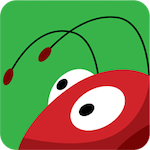I have been teaching Scratch to primary school children for two years now.
Scratch was developed by MIT to enable children to create their own stories and games while learning to code. There is a terrific community of ‘scratchers’ where projects are shared and remixed. Thousands of projects have been made – from very simple animations to complex programs.
Why is Scratch the perfect platform to teach programming?
 Because it is fun. The children use a series of blocks that can be logically combined to form a series of instructions to achieve an intended outcome in an a fun and interactive way. Those who play with it are challenged all the time and can and do use their imagination to come up with exciting games which they can play with and share.
Because it is fun. The children use a series of blocks that can be logically combined to form a series of instructions to achieve an intended outcome in an a fun and interactive way. Those who play with it are challenged all the time and can and do use their imagination to come up with exciting games which they can play with and share.
The skills that the children develop is pretty vital for the world in which they are growing up: logical thinking, applying computational thinking, learning programming concepts, and understanding the benefits of collaboration and sharing.
Scratch also helps children to further develop their understanding of maths. Most of the games the children make involve an understanding of time, coordinates, angles, the use of mathematical operators, and so on.
Can Scratch interact with the outside world?
Scratch comes with a series of sensing blocks that can be used to interact with the outside world, like video and sound. It can also connect to an electronic board, like Arduino, RaspberryPi, or Picoboard – and allows children to understand how a computer program can trigger a light, or how pressing a push button can run their program.
I have loved teaching children coding and I’m now planning on experimenting with electronics in future lessons.
